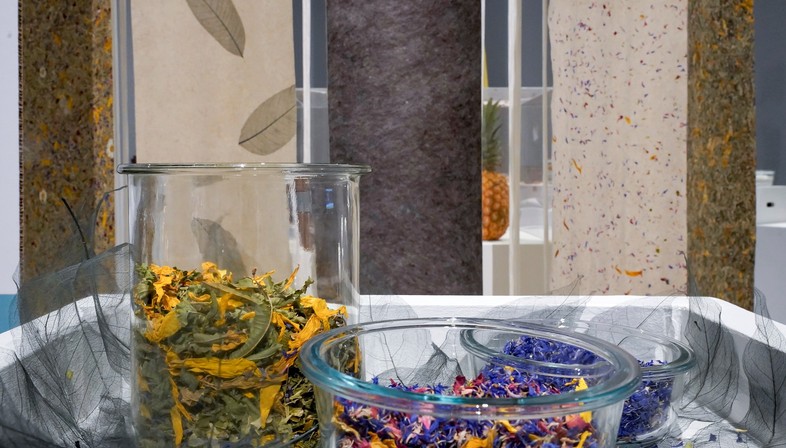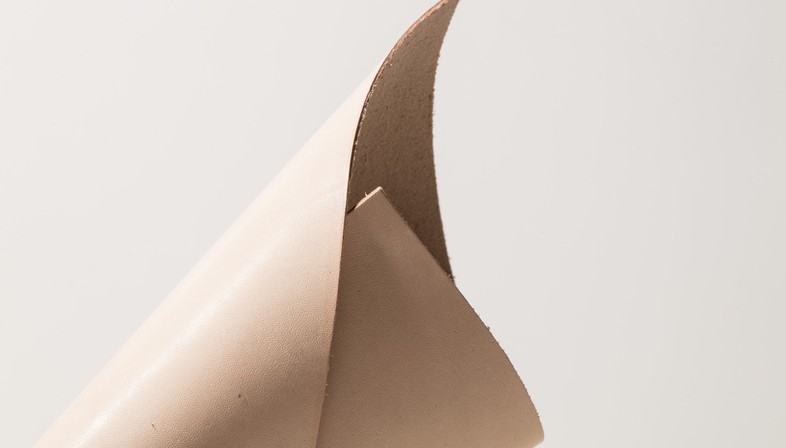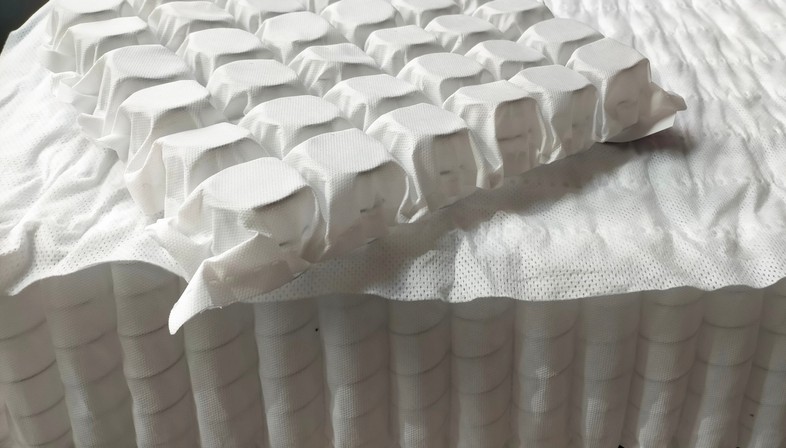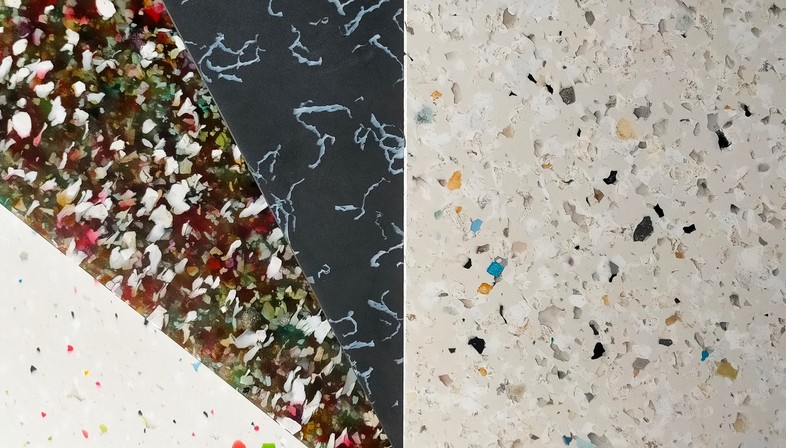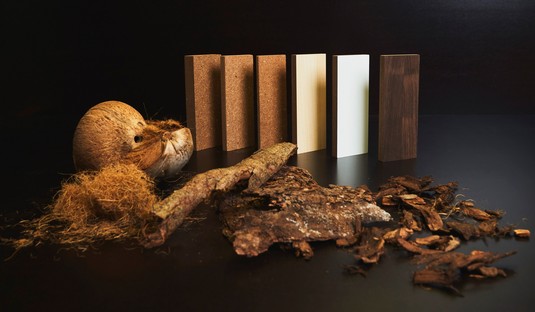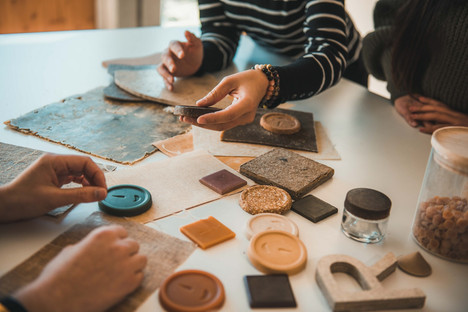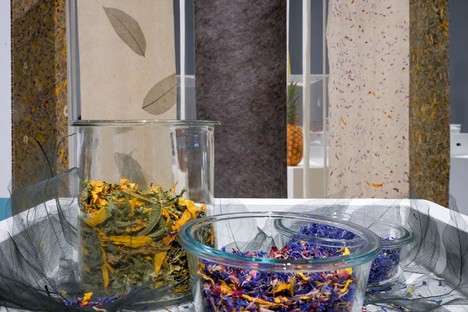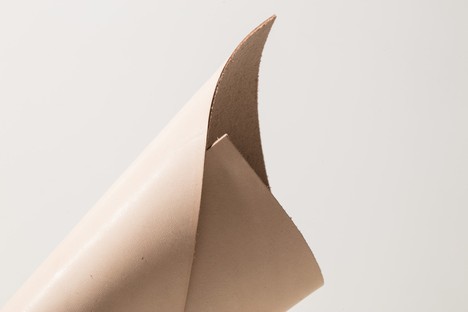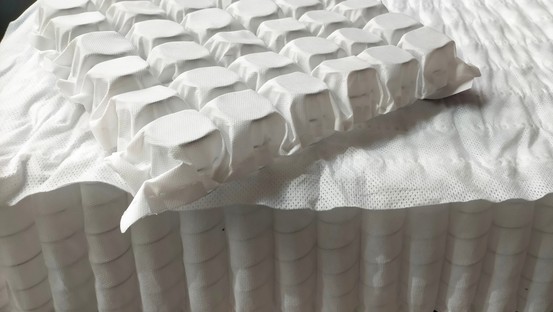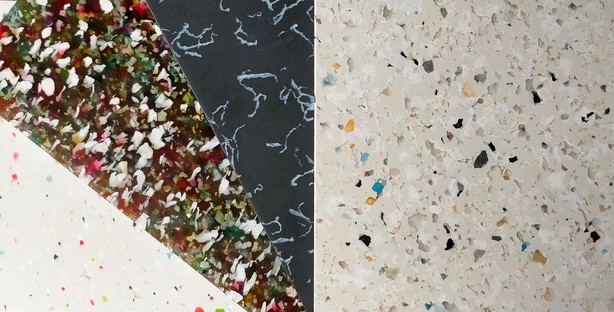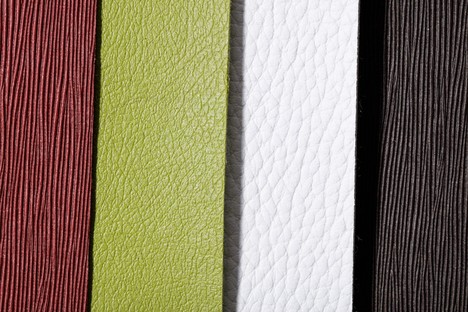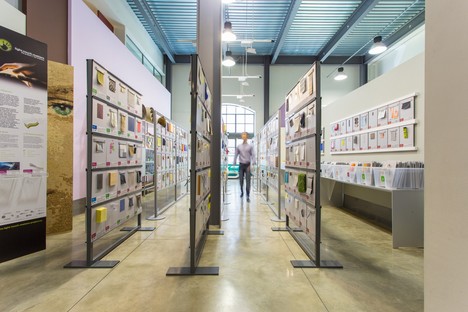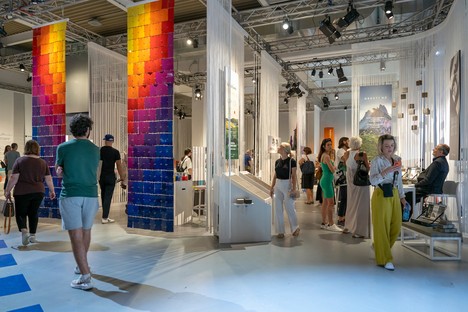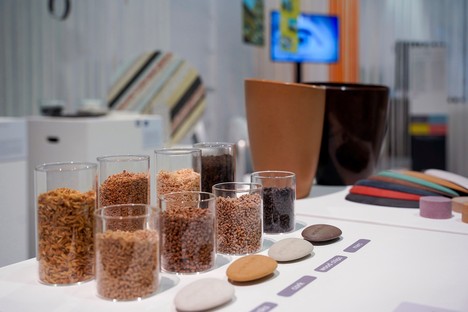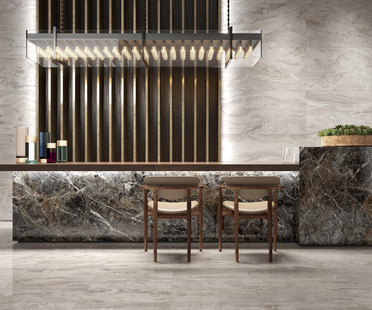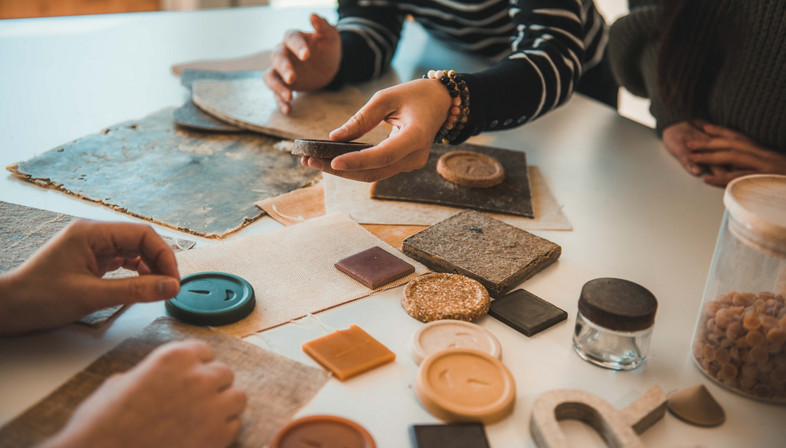
Materially is located in Milan, on a fully renovated industrial archaeology site in Viale Sarca, in the Bicocca district to the northeast of Milan, a lively area popular with technology companies, universities and research centres. Including Materially, which has been providing materials sustainability consultancy services for more than twenty years. Its president Chiara Rodriquez illustrates the company’s recent evolution: “Until a couple of years ago we were known as Material ConneXion, like the American company we evolved out of. Our initial idea was to create a library and a database of materials for people scouting out unusual, innovative sustainable materials. By which I mean bio-based natural materials with a low environmental impact. We now have a library of more than a thousand samples of materials on view in our offices, with a database containing more than ten thousand materials. Materially’s task is to connect makers of materials with companies, and vice versa, and to offer consultancy and education in this rapidly growing field.”
This specialised observatory provides important information on trends in materials for design in the home. What are companies looking for today? “Sustainability is a key theme”, replies Chiara Rodriquez, “research in materials for interior design and furnishings is never subordinate to the values ‘historically’ associated with materials; comfort, appearance and performance. The challenge is to find materials that respond to these requirements while also fulfilling the need for greater circularity and sustainability.” According to Chiara Rodriquez, the furniture industry in Italy and other developed nations is well-placed in terms of sustainability,: “The key material is sustainable: wood is certified, recycled and recyclable, it’s healthy, and the supply chain does not consume huge amounts of energy. Plus there are a number of supply chains already in place that reclaim and reuse furniture.” The sector is thus already at a good point, and is making progress toward the next step: “the focus now is on all those materials that respond to the MEC (Minimum Environmental Criteria established for the various phases of the purchasing process in public procurement, ed.). People also want materials without harmful VOCs (Volatile Organic Compounds) and increasingly certified materials whose pedigree boasts an LCA (Life Cycle Assessment). On the whole, we may say that furniture makers continue to investigate the invisible aspects of their products”, concludes Rodriquez.
The ‘touch and feel’ aspect also remains important in materials, however sustainable: “Forget about that unattractive grey and brown recycled plastic,” continues the president of Materially. “We’ve just unveiled a particularly beautiful new recycled plastic made in Ukraine and the Netherlands which allows manufacturers to achieve effects of uniformity and continuity in colour. Other processes may be applied to materials to underline the aesthetic aspects of texture and colour without adding any harmful substances. We have recently been informed of a very interesting system of furniture panels which have a stable 90° interlock without glues, nails or screws. We define materials as everything we use: processes, raw materials, semi-products.”
The pandemic undoubtedly accelerated a shift in the point of view of major global players and small local enterprises alike. When an entire system is shifted, different solutions emerge, many of which were immediately tested and produced on a larger and larger scale. This change was perceived in Materially’s work: “We are seeing a very strong need for information on new materials”, confirms Rodriquez, “in effective assessment of the sustainability coefficient, also on the part of the major players. Federlegno Arredo (Italy’s industrial association for wood and furniture, ed.) has a great sustainability project underway supporting the industry all over Italy. In this context, we are working on creation of an easily consultable database”.
More information is important for dismantling prejudices such as the one against plastic. “In many ways it’s wrong to demonise plastic,” declares Chiara Rodriquez; “it’s a material that can actually be more sustainable than others, if we consider it in a context that includes the logic of production and distribution. For certain uses, such as large-scale distribution, especially of groceries, plastic film can be more sustainable than glass or paper.” The plastic industry has made a lot of progress in reclamation and recycling; the same cannot be said of fabrics, which do not have an efficient recovery strategy, in addition to the fact that cotton, though a natural material, requires a lot of land and water to grow and process. In assessing a material’s sustainability, it’s essential to consider the context in which it is produced and its role in the system, establishing its true environmental footprint.
Antonella Galli
Captions
Photos courtesy of Materially
01 Cocoboard: coconut fibre and lignin panels. Credits: Naturloop
02 Biocomposites made from by-products of agriculture and forestry, such as natural resins, bark and pine needles. Credits: Arrosia
03 Organoid: surface coverings made from leaves, flowers and dried grass. Photo by Elena Galimberti
04 Naturella: vegetable-tanned cowhide. Credits: Santori Pellami
05 Pocket springs, which may be disassembled at the end of their lifespan and completely recycled
06 Polygood: recycled post-consumer and post-industrial polystyrene sheets and panels.
07 Leather substitute made from fruit processing scrap. Credits Material ConneXion LLC
08 Materially is home to the Material ConneXion physical library.
09-11 Urban Matters: Materially exhibition and event during Design Week 2022 in Milan focusing on sustainable materials for urban living.










